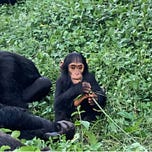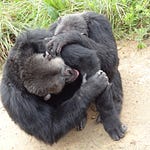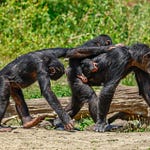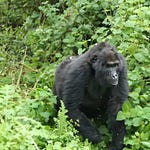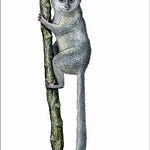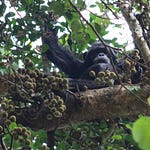Researchers have long explored human curiosity, but the question of whether this drive extends deeply into our great ape relatives remains less clear—until now. A comparative study1 by Lewis et al. (2025) leverages parallel experiments with chimpanzees and 4–6-year-old children to illuminate how both species gravitate toward social scenes, sometimes at a measurable cost. This work suggests that the urge to observe others' social dynamics may be woven into our shared evolutionary fabric.
What the study did—and what it found
In a series of three experiments conducted at facilities in Uganda and California, chimpanzees and children made choices between viewing videos of either a single individual or a social interaction, using custom “curiosity boxes.”
Experiment 1
Both groups consistently spent more time engaging with videos of group behaviors—grooming, playing, squabbles—than with one-on-one or solitary action scenes.Experiment 2
Research participants faced a trade-off: a tangible reward (jackfruit seeds for chimps, marbles for children) versus paying a cost to watch social content. Male chimpanzees and younger children frequently sacrificed the reward to satisfy their social curiosity .Experiment 3
Children showcased developmental shifts: boys exhibited growing interest in negative interactions with age, while girls increasingly favored positive ones. Chimpanzees, in contrast, showed no bias toward either emotional tone.
Why that matters
These findings mark one of the first direct experimental parallels between children and chimpanzees in the domain of social curiosity. The tendency to “eavesdrop” on social interactions may not be a novelty of human culture, but rather an inheritance from a common ancestor, offering evolutionary advantages: spotting alliances, rivalries, and potential allies from afar.
Expert reflections
“Curiosity about what others are doing—being a bit nosey—starts young and runs deep,” the team proposes, highlighting benefits that extend beyond mere entertainment
The lead author noted that both species "preferred to watch videos of social interactions compared to … a single individual," underscoring the shared inclination toward social insight.
Broader context: how this fits
This research builds on existing work connecting social exposure to exploratory learning. In orangutans, for instance, early sociability predicts later innovation and problem-solving capacity Additionally, Murray et al. (2014) found that female chimpanzees with sons engage more socially, hinting at gendered nuance in social curiosity. Developmental cognitive comparisons have emphasized joint attention and imitation as hallmarks of human-toddler social cognition, some of which emerge in chimpanzees but lack the communicative depth seen in humans .
Paths forward
Lewis et al. propose pursuing comparative work across species (e.g., bonobos, orangutans) and within human cultures to explore variables like age, gender, familiarity, and relationship type. Early-life social context plays a known role in shaping exploratory behaviors, suggesting that social curiosity may crystallize during critical developmental windows .
Additional reading
van Schaik, C.P., Pradhan, G.R., & Tennie, C. (2019). Teaching and curiosity: sequential drivers of cumulative cultural evolution. Behav. Ecol. Sociobiol., 73, 2. https://doi.org/10.1007/s00265-018-2610-7 pmc.ncbi.nlm.nih.gov
Forss, S.I.F., Koski, S.E., & van Schaik, C.P. (2017). Explaining the paradox of neophobic explorers: the social information hypothesis. Int. J. Primatol., 38, 799–822. https://doi.org/10.1007/s10764-017-9973-4 pmc.ncbi.nlm.nih.gov
Damerius, L.A., Graber, S.M., Willems, E.P., & van Schaik, C.P. (2017). Curiosity boosts orang‑utan problem‑solving ability. Anim. Behav., 134, 57–70. https://doi.org/10.1016/j.anbehav.2016.11.010 pmc.ncbi.nlm.nih.gov
Murray, C.M., Lonsdorf, E.V., Stanton, M.A., Wellens, K.R., Miller, J.A., Goodall, J., & Pusey, A.E. (2014). Early social exposure in wild chimpanzees: Mothers with sons are more gregarious than mothers with daughters. PNAS, 111, 18189–18194. https://doi.org/10.1073/pnas.1409507111 pnas.org
Herrmann, E., Call, J., Hare, B., Tomasello, M., Hernández‑Lloreda, M.V. (2007). Humans have evolved specialized skills of social cognition: The cultural intelligence hypothesis. Science, 317(5843), 1360–1366. https://doi.org/10.1126/science.1146282 eurekalert.org+1ecampusontario.pressbooks.pub+1
Lewis, L. S., Ritov, O., Herrmann, E., Reddy, R. B., Sanchez-Amaro, A., Gopnik, A., & Engelmann, J. (2025). Chimpanzees and children are curious about social interactions. Proceedings. Biological Sciences, 292(2048), 20242242. https://doi.org/10.1098/rspb.2024.2242

